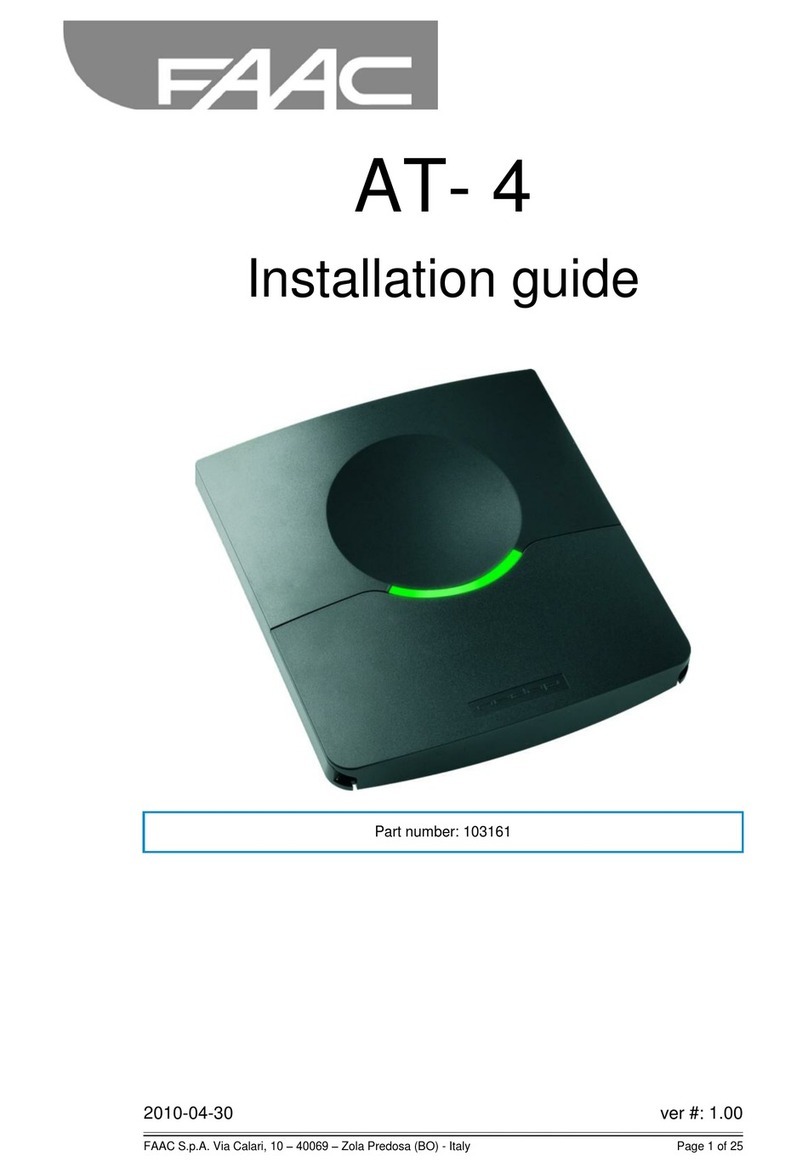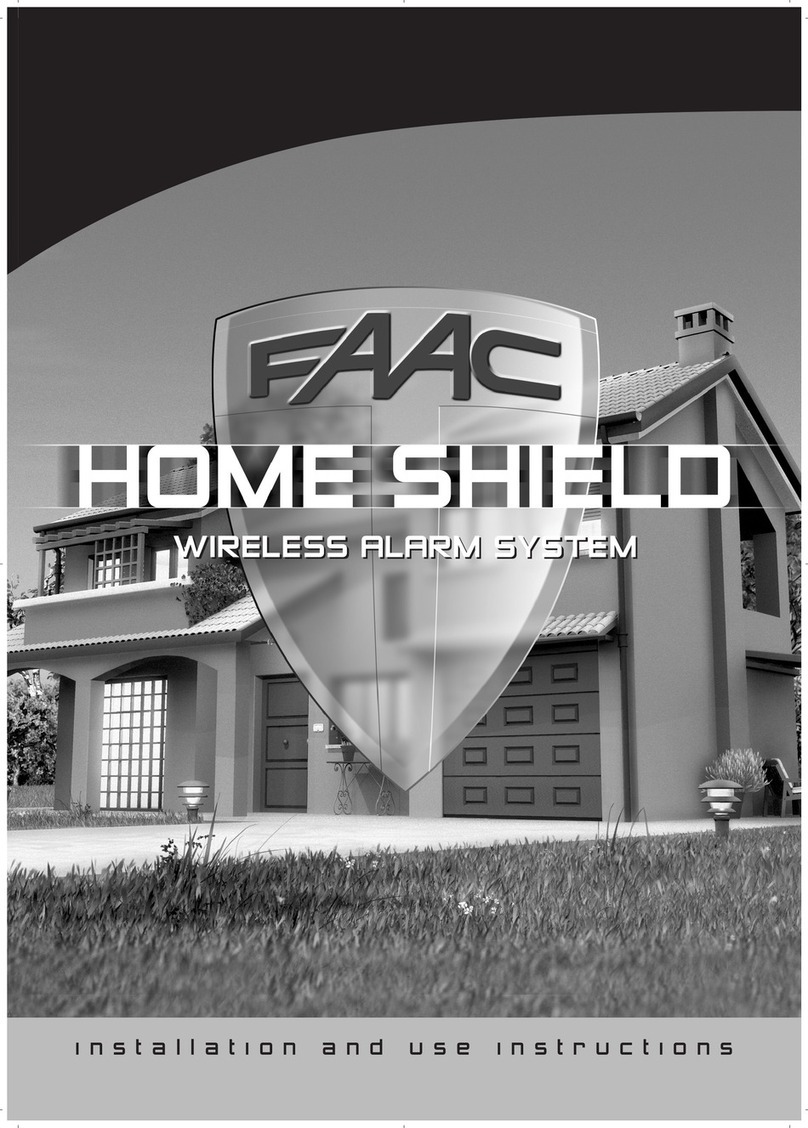The control unit must be in MAINTENANCE
PROGRAM mode (See Alarm Control Unit Instructions).
LEARNING
To ensure that the equipment of a radio alarm
system can communicate or dialogue with each
other, they must first recognise each other.
For this recognition, known as “learning”, the siren
must be powered and open.
INSTALLATION
Put the control unit in “ADD DEVICES” mode
(From the “INSTALLATION” menu of the keypad,
press the OK key to access the “ADD DEVICES”
menu and press the OK key again).
Registering the siren
- Press the siren's TEST
push-button.
From that moment on, the siren will recognise the
commands coming from the control unit.
The registered parameters will be stored also after
power is interrupted (battery replacement).
The control unit will emit several beeps, if the
product has not been correctly registered as
regards the radio range limit, or if the maximum
number of sirens has been reached.
- Power up the siren (see Power supply chapter).
- Close the cover, after carrying out the learning
procedure.
NOTE: during this operation, the battery pack
must be disconnected
- Open the siren loosening the 4 cover screws (loss-
proof screws) for about four turns.
Using the drilling template, supplied with the
instructions:
- Place a screw in front of the self-protection rocker.
The screw must project by about 20 mm, so that the
rocker can rest on it inside the siren.
- Secure the siren enclosure.
Note:
The siren has a temperature probe, which indicates
the outdoor temperature on the control keypad.
Deletion: the siren can be deleted from the system.
- To delete the siren in the control unit, consult the
control unit instructions.
- To delete the control unit in the siren, press the
siren's TEST push-button for one minute.
When the push-button is pressed, the control unit
beeps once.
After 1 minute the siren emits a short sound.
The control unit and then the siren will beep.
The control unit's indicator light “5” (siren) lights up.
If a siren has been previously registered, this
indicator light is already lighted.
- Close the siren's cover.
- Close the control unit compartment.
4
Exit from the ADD DEVICES mode and return
to the MAINTENANCE PROGRAM mode.
Exit from the ADD DEVICES mode is automatic
when 5 minutes of inactivity have elapsed, or can be
5
4





























